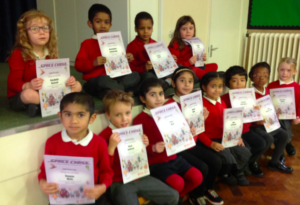Reading at Sandhurst Primary School
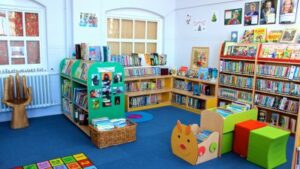
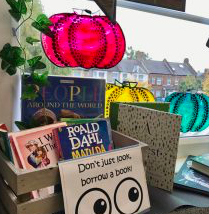
At Sandhurst Primary we develop children’s love of literature through widespread reading for pleasure. We believe it is important to expose children to quality texts in order to engage and inspire them to be life-long readers. Reading feeds children’s imaginations and provides wonder and joy for curious young minds, so we believe it is important to encourage our children to read a diverse range of books by a wide variety of authors. We seek to develop a strong reading culture through planned activities and events which promote reading as a positive experience. Each class has a reading area with a variety of books, added to this we have a wonderful school library, with a rich selection of books as well as smaller reading ‘pop-up corners’ and reading sheds outside.
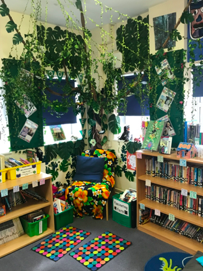
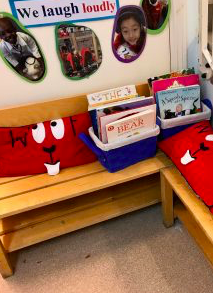
From nursery, children are exposed to quality texts, engaging and inspiring them to want to read for themselves and to model reading and language structures. We know that language acquisition and vocabulary is crucial to our children, especially in the Early Years, and so a story rich culture is paramount. In year 1 children begin our Daily Supported Reading programme [DSR] – enabling children to read books independently and successfully at their learning level, to an adult, four days per week. Children also benefit from a taught synthetic phonics programme called Read, Write Inc by Ruth Miskin. This begins as soon as children start in Reception and follows through to Year 2.
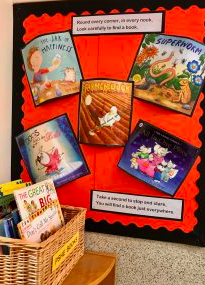
From year 3 to Year 6 our children study texts in Whole Class Reading lessons. With a strong emphasis on reading for pleasure, we carefully select high-quality texts which provide our children with rich literary experiences. When building our collections of texts, we carefully map progression across the school to ensure we expose our children to a broad range of age-appropriate, quality books including novels, poetry, non-picture and picture books. As each lesson dips into a chapter or two of a text, we use this as an opportunity to signpost children to quality literature, offering all children the opportunity to broaden their reading experiences.
As the whole class are involved, exploring a text together opens the potential for a wider and richer discussion. Through ‘building and challenging’, all children are encouraged to share their ideas about a text, helping to develop a collective understanding of the plot, themes and characters. During this process teachers explicitly model reading skills, scaffolding their responses with sentence starters and skills prompts. To support children so they are able to access and engage in our reading lessons, teachers pre-teach vocabulary, explicitly teaching unfamiliar words and using visuals to aid their understanding. Teachers then build on the children’s wider knowledge, contextualising the story or making broader connections with other texts or the wider curriculum. As each lesson also provides varied opportunities for teachers to read to and with the children, it helps them to develop their reading fluency, pace and understanding. Once children have explored the text together, children are given the opportunity to demonstrate their understanding through varied activities. These help to scaffold, support and challenge our pupils.
For children who are still finding decoding difficult in KS2, they receive additional guided/individual reading sessions with a focus on decoding, as well as dedicated phonics teaching for some.
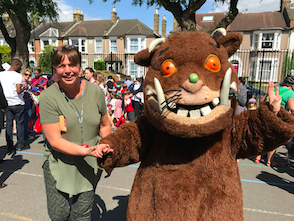
At Sandhurst we value the role of Parents and carers in their children’s reading journey and reading records are used throughout the school to aid communication between home and school. Through enrichment days such as World Book Day, children enjoy a variety of book-related fun activities.
We have close links with the local Library and support events such as the ‘Summer Reading Scheme’. Book fairs and book swaps are held annually and provide an opportunity for children to purchase/share books whilst raising money for class libraries.
Phonics at Sandhurst Primary School
We use the highly successful Read Write Inc. Phonics programme to teach our children to read and spell.
What is Read Write Inc.?
Read Write Inc. (RWI) is a systematic, synthetic phonics programme developed by Ruth Miskin, which helps all children learn to read fluently and at speed so they can focus on developing their skills in comprehension, vocabulary and spelling. The programme is designed for children aged 4-7. However, at Sandhurst Primary, we continue teaching RWI to children beyond the age of 7 if they still need support in their reading and spelling.
How will RWI be taught?
All children are assessed regularly by their teacher so they will work with children at the same level. This allows for complete participation in lessons. Children have daily lessons from Reception to the end of Key Stage 1. For each letter sounds taught [Speed Sound], there is a picture and a phrase which helps the children to remember it.
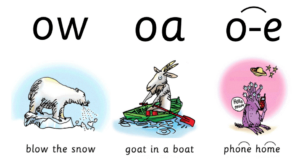
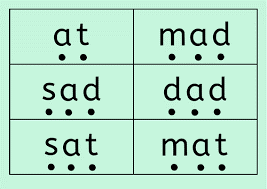
Alongside this, there are ‘Green Words’ for children to practise reading words with that Speed Sound in them. ‘Green Words’, are those which can be ‘sounded out’ to be read. Common Exception words are called ‘Red Words’ and have to be taught and learned as they cannot be ‘sounded out’.
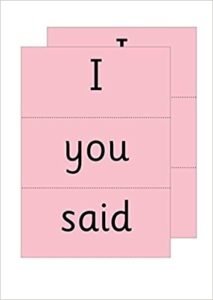
Nursery
In Nursery, we recognise the importance of children developing their pre-phonological awareness. This means that children will be taught to recognise different sounds in the environment as well as playing with words, rhyme and sounds in words. Teachers explore and utilise quality texts with the children and link these to develop their vocabulary and phonological awareness. When appropriate, children will be introduced to letter sounds in short sessions.
Reception
To begin with, the children learn a letter sound a day. We use pure sounds so that your child will be able to blend the sounds into words more easily. e.g. mmaisie mmmountain is morphed into m, t-t-t-tower is morphed into t.
In Reception all children will learn how to read and write all of the letter sounds in Speed Sounds Set 1, and then taught how to blend these into words. Children will also be taught at least ten digraphs [two letters which make one sound; e.g.: ‘oo’, ‘ee’], which are known as ‘Speed Sounds 2’. The teachers will often use the phrase ‘Fred talk’ to sound out words, [e.g.; c-a-t is cat]. Fred the Frog helps the children to blend the sounds together which is then used to help children read. For spelling, children are taught to use their ‘Fred Fingers’ for sounding out words to write.

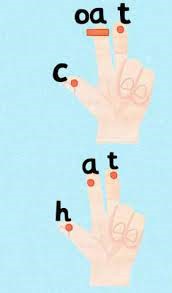
They also learn how to read and spell common exception words, which we call ‘Red words’, (words that cannot be sounded out), during these lessons. Children begin their reading journey using RWI instructional texts. They will usually start reading ‘Ditties’, which are short texts involving the phonics being taught at the time and are shared read in class and then taken home to practise. When children are ready they progress onto the story books.
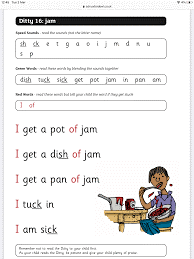
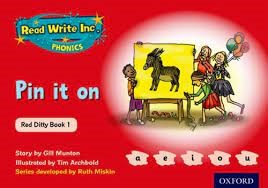
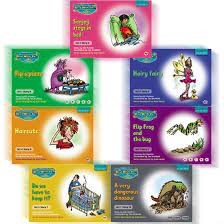
Year One & Year Two
Children follow the same format as Reception but will work more on complex sounds (Speed Sounds 2 and 3]). They continue to progress using RWI instructional texts. Once children become fluent speedy readers and writers they will move onto the RWI ‘Get Spelling’ part of the programme.
A brief note about the letter sounds
Set 1 Speed Sounds are taught in the following order together with rhymes to help children form the letters correctly and instantly recognise sounds ready for blending.
| Set 1 | |
| Sound | Rhyme |
| m | Down Maisie then over the two mountains. Maisie, mountain, mountain. |
| a | Round the apple, down the leaf. |
| s | Slide around the snake |
| d | Round the dinosaur’s back, up his neck and down to his feet. |
| t | Down the tower, across the tower, |
| i | Down the insects body, dot for the head. |
| n | Down Nobby and over the net. |
| p | Down the plait, up and over the pirates face. |
| g | Round the girls face, down her hair and give her a curl |
| o | All around the orange |
| c | Curl around the caterpillar |
| k | Down the kangaroos body, tail and leg |
| u | Down and under the umbrella, up to the top and down to the puddle |
| b | Down the laces, over the toe and touch the heel |
| f | Down the stem and draw the leaves |
| e | Slice into the egg, go over the top, then under the egg |
| l | Down the long leg |
| h | Down the horse’s head to the hooves and over his back |
| sh | Slither down the snake, then down the horse’s head to the hooves and over his back |
| r | Down the robot’s back, then up and curl |
| j | Down his body, curl and dot |
| v | Down a wing, up a wing |
| y | Down a horn, up a horn and under the yak’s head. |
| w | Down, up, down, up the worm. |
| th | Down the tower, across the tower, then down the horse’s head to the hooves and over his back |
| z | Zig-zag-zig, down the zip. |
| ch | Curl around the caterpillar, , then down the horse’s head to the hooves and over his back |
| qu | Round the queen’s head, up to her crown, down her hair and curl |
| x | Cross down the arm and leg and cross the other way |
| ng | A thing on a string |
| nk | I think I stink |
Set 2 & 3 Speed Sounds:
Once your child knows all Speed Sounds 1 by sight and sound and uses them to blend to read words, we start teaching Set 2 initially and then Set 3 long vowel sounds. Your child will need to learn that most vowel sounds have more than one spelling.
There are 12 Set 2 Speed Sounds that are made up of two or three letters which represent just one sound, e.g. ay as in play, ee as in tree and igh as in high. It is important that your child does not pronounce these as 2 or 3 separate sounds. When your child sees the ‘speed sound’ letters together in a word, they must say just one sound for these letters.
|
Long vowel sound |
Set 2 Speed Sound cards Teach these first |
Set 3 Speed Sound cards |
|
|
ay |
ay: may I play |
a-e: make a cake |
ai: snail in the rain |
|
ee |
ee: what can you see |
ea: cup of tea |
e: he me we she be |
|
igh |
igh: fly high |
i-e: nice smile |
|
|
ow |
ow: blow the snow |
o-e: phone home |
ao: goat in a boat |
|
oo |
oo: poo at the zoo |
u-e: huge brute |
ew: chew the stew |
|
oo |
oo: look at a book |
|
|
|
ar |
ar: start the car |
|
|
|
or |
or: shut the door |
aw: yawn at dawn |
|
|
air |
air: that’s not fair |
are: share and care |
|
|
ir |
ir: whirl and twirl |
ur: nurse for a purse |
er: a better letter |
|
ou |
ou: shout it out |
ow: brown cow |
|
|
oy |
oy: toy for a boy |
oi: spoil the boy |
|
|
ire |
|
ire: fire fire! |
|
|
ear |
|
ear: hear with your ear |
|
|
ure |
|
ure: sure it’s pure? |
|
Follow the links below to learn how to pronounce the Speed Sounds:
Oxford Owl has lots of free Read Write Inc. Phonics resources to help your child continue learning, including eBooks, practice sheets, Ditty sheets, slideshows, and parent films.
These free resources for home can be found at
https://home.oxfordowl.co.uk/reading/reading-schemes-oxford-levels/read-write-inc-phonics-guide/
Summer Reading Challenge Winners


